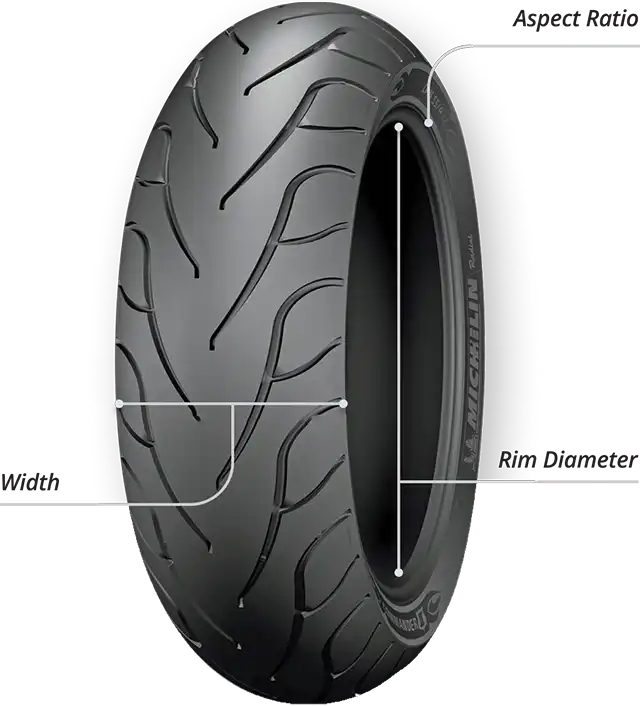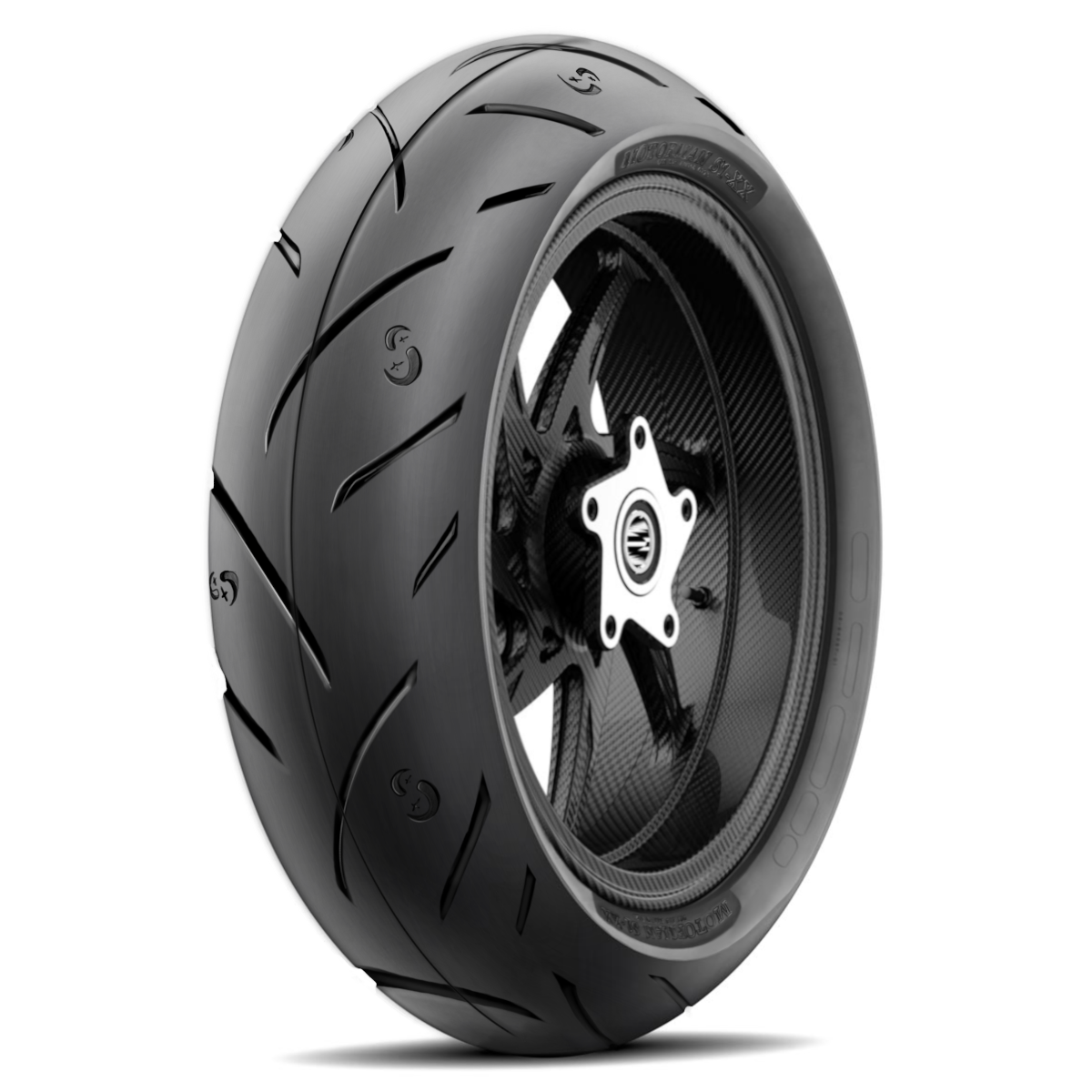Motorcycle Tyre Guide for Urban Cyclists and Urban Riders
Motorcycle Tyre Guide for Urban Cyclists and Urban Riders
Blog Article
Explore the Importance of Picking the Right Tyres With Our Useful Motorcycle Tire Guide
Choosing the ideal tires is essential for any type of Motorcycle fanatic. The right tyres improve efficiency, enhance safety and security, and add to total comfort during adventures. Understanding the various types, dimensions, and maintenance practices can greatly affect your riding experience. As motorcyclists deal with diverse surfaces and conditions, recognizing just how to select the most effective tyres ends up being paramount. What variables should be taken into consideration to ensure peak performance? The answers wait for in the complying with areas.
Comprehending Different Kinds Of Motorcycle Tyres
Although selecting the best sort of Motorcycle tyre may seem overwhelming, comprehending the different alternatives readily available can significantly boost a cyclist's experience. Motorcycle tyres are primarily classified right into three kinds: sporting activity, touring, and off-road. Visiting tires are created for long-distance traveling, using resilience and convenience on highways. These tires feature a step pattern that supplies exceptional grasp and security, making them ideal for various climate conditions.Sport tires, on the various other hand, prioritize efficiency and handling, including a softer rubber compound that enhances hold during cornering. They are excellent for bikers that enjoy perky adventures on twisty roads or racetracks. Off-road tires are tailored for sturdy surface, with an aggressive walk pattern that gives grip on loosened surface areas like dirt or crushed rock.
Analyzing Your Riding Design and Needs
When evaluating riding design and needs, recognizing just how various riding problems influence efficiency is important. This assessment can lead riders in picking the appropriate tire kinds that straighten with their particular needs. By taking into consideration elements such as terrain and weather, bikers can make educated decisions for ideal safety and experience.
Riding Problems Impact
As motorcyclists browse numerous surfaces and weather, recognizing how these factors affect Motorcycle performance comes to be vital. Different riding atmospheres, such as wet, dry, or off-road, need details tire attributes to ensure safety and security and optimal handling. Wet conditions require tires that provide far better hold to protect against hydroplaning, while off-road riding necessitates durable tread patterns for grip on loose surface areas. In addition, temperature variations can influence tyre pressure and efficiency, requiring modifications based on the conditions encountered. Cyclists should examine their typical paths and atmospheres when choosing tyres, as the best choice can substantially boost their riding experience, assuring both convenience and safety in varied scenarios. Matching tires to riding conditions is necessary for efficient Motorcycle efficiency.
Tire Types Review
Recognizing the various kinds of Motorcycle tires is critical for riders intending to boost their efficiency and security. Each tyre type accommodates particular riding problems and styles. Sporting activity tires, created for high grip and dexterity, are optimal for hostile riding and track days. Exploring tires focus on durability and comfort, making them suitable for long-distance journeys. Off-road tyres include deeper footsteps for traction on unequal surface areas, attracting adventure hunters. Cruiser tires offer a smooth experience, commonly highlighting visual appeals for cruisers and choppers. Lastly, dual-sport tyres blend functions of both on-road and off-road tires, offering versatile cyclists. Examining private riding designs and needs assurances that the appropriate tire kind is picked, inevitably improving total riding experience and safety and security.
The Influence of Tire Size on Performance
Tire dimension greatly influences a bike's overall performance, affecting handling, grip, and stability. The diameter and size of tyres can notably modify a bike's characteristics. Larger diameter tires can improve high-speed performance, giving smoother trips and improved security during straight-line traveling. Nevertheless, they might additionally require more initiative for fast handling. Alternatively, narrower tires often tend to provide far better agility and responsiveness, making them optimal for dilemmas and detailed riding conditions.Additionally, the element proportion, which connects to the tyre's elevation, plays an important role in efficiency attributes. A lower profile tire might enhance cornering stability but can compromise comfort as a result of lowered cushioning. Ultimately, choosing the proper tyre dimension aligns with the biker's choices and intended usage, whether for sporting activity, touring, or off-road riding. Comprehending these nuances guarantees peak performance and enhances the general riding experience.
Walk Patterns and Their Value
Tread patterns on Motorcycle tyres play an important function in establishing performance, influencing elements such as grip and handling. Various sorts of step designs deal with different climate condition and terrains, making certain excellent traction and security. Recognizing these patterns is essential for bikers seeking to enhance their Motorcycle's efficiency and safety.
Kinds Of Tread Patterns
The performance of a motorbike is substantially influenced by the sort of tread pattern on its tyres. Numerous step patterns offer certain functions, accommodating various riding conditions. For instance, slick tyres feature a smooth surface, perfect for completely dry conditions and auto racing, providing optimum grip. In contrast, tires with complicated patterns and deep grooves are designed for off-road or wet conditions, improving water variation and traction. Some walk layouts, such as dual-purpose tires, strike a balance for both light and on-road off-road use. motorcycle tyre guide. In addition, sport tires usually have a more aggressive walk pattern, boosting cornering security. Comprehending these kinds of walk patterns aids riders choose the appropriate tyres for their designated riding experiences and ecological conditions
Influence on Performance
Choosing the ideal walk pattern significantly influences a motorbike's performance in different riding problems. Walk patterns are designed to optimize grip, dealing with, and security, straight affecting cornering capacity and braking performance. An extra hostile tread layout enhances grip Discover More Here on irregular surface areas, making it suitable for off-road riding. Conversely, a slicker step pattern promotes smoother experiences on paved roads, minimizing rolling resistance and enhancing gas efficiency. The depth and arrangement of grooves likewise play an essential duty, enabling reliable water variation and decreasing hydroplaning threats. Inevitably, choosing a proper walk pattern tailored to certain riding atmospheres and designs assurances enhanced control, security, and general riding experience, highlighting the significance of this choice for Motorcycle enthusiasts.
Climate and Terrain Suitability
Climate conditions and surface kinds considerably affect the viability of Motorcycle tire step patterns. In wet conditions, tyres with much deeper grooves and certain patterns are vital to transport water away and decrease the danger of aquaplaning. Alternatively, a flatter tread layout offers suitable surface call for dry roadways, enhancing grip and stability. For off-road riding, bumpy tyres offer raised traction on loose surface areas like mud and crushed rock. Each tread pattern offers a distinctive purpose; consequently, picking the ideal tire is vital for performance and safety. Cyclists need to consider their regular riding environment-- whether metropolitan, rural, or differed terrains-- to guarantee their tyres can effectively manage the conditions, promoting a much safer and much more pleasurable riding experience.
Preserving Your Motorcycle Tyres for Longevity
While Motorcycle fanatics often concentrate on efficiency and appearances, disregarding tyre upkeep can lead to early wear and unsafe riding conditions. Routinely checking tire pressure is crucial, as both under-inflation and over-inflation can negatively affect taking care of and grasp. Additionally, keeping the proper pressure can improve fuel performance and general performance.Routine examinations for indications of damage, such as fractures or slits, additionally play an essential role in prolonging tyre life. Maintaining tires clean from debris and pollutants assurances peak traction. Rotating tyres regularly helps disperse put on uniformly, prolonging their lifespan.Proper positioning and balancing of the wheels are necessary for maintaining stability and minimizing unequal wear. Adhering to the maker's suggestions for tyre substitute intervals ensures that cyclists are outfitted with secure and reputable tyres. By prioritizing these upkeep techniques, motorcyclists can delight in a more secure and longer-lasting riding experience.
Recognizing Tyre Use and When to Replace
To ensure suitable security and efficiency, motorcyclists need to be vigilant in recognizing tyre wear and knowing when to replace their tyres. Tyre tread depth is an important indicator; a depth of 1.6 mm or much less typically signals the requirement for substitute. Cyclists must likewise take a look at the tyres for unequal wear patterns, which can recommend positioning or suspension concerns. Fractures, bulges, or noticeable cables are severe signs of deterioration and warrant immediate replacement.Monitoring tire pressure is important as under-inflation can speed up wear and compromise safety. Furthermore, riders should recognize the age of their tyres; also if the walk shows up sufficient, tyres older than 5 years may require changing as a result of rubber destruction. Routine inspections and upkeep will certainly help establish that tires stay in peak condition, ultimately enhancing both cyclist safety and security and total Motorcycle performance.

Tips for Picking the Right Tyres for Your Bike
Picking the right tires for a motorcycle is extremely important for guaranteeing optimal performance and security, especially after recognizing the indicators of wear that demand replacement. Initially, navigate to this website riders ought to consider their riding style and the Continue kinds of problems they commonly come across. Sport tyres offer boosted grasp for hostile riding, while visiting tires offer durability and comfort for long journeys.Next, it's important to inspect the producer's requirements for the Motorcycle, as these standards ensure compatibility. Furthermore, reviewing tyre dimension, step pattern, and rubber compound can influence efficiency. Cyclists need to likewise factor in weather problems; certain tyres perform better in damp or dry environments.Finally, buying from credible brand names can guarantee top quality and reliability, while getting in touch with fellow bicycle riders or professionals can offer important insights. By very carefully taking into consideration these aspects, motorcyclists can choose tyres that improve their Motorcycle's performance, security, and overall riding experience.
Frequently Asked Concerns
Just How Do Weather Impact Tyre Performance?
Climate condition substantially influence tyre efficiency, affecting hold, handling, and wear. Rainfall can minimize grip, while severe heat might trigger getting too hot. Cold temperature levels can harden rubber, jeopardizing versatility, therefore affecting total safety and ability to move when traveling.
Can I Mix Different Tyre Brands on My Motorcycle?
Blending different tyre brand names on a motorbike can result in inconsistent handling and performance - motorcycle tyre guide. Professionals recommend using the very same brand and design for both front and rear tyres to ensure maximum safety and security and stability during trips
What Is the Average Life-span of Motorcycle Tyres?

Do Motorcycle Tyres Requirement to Be Balanced?
Motorcycle tyres do require balancing to assure also weight circulation. Appropriately well balanced tyres enhance stability, enhance handling, and decrease unequal wear, ultimately adding to a safer and much more comfortable riding experience for motorcyclists.
Exactly how Frequently Should I Examine My Tyre Pressure?
Routine checks of tyre pressure are crucial for security and efficiency. It is recommended to check Motorcycle tire stress at the very least as soon as a month and eventually experiences, making sure suitable handling and fuel efficiency. These tyres include a step pattern that offers outstanding grasp and stability, making them ideal for numerous climate conditions.Sport tyres, on the various other hand, prioritize efficiency and handling, including a softer rubber compound that improves grasp throughout cornering. Alternatively, narrower tires often tend to supply better dexterity and responsiveness, making them suitable for limited corners and complex riding conditions.Additionally, the aspect ratio, which relates to the tyre's height, plays a crucial function in performance characteristics. Sticking to the supplier's suggestions for tyre replacement periods ensures that bikers are geared up with dependable and risk-free tires. To guarantee optimal safety and security and efficiency, riders need to be attentive in recognizing tire wear and recognizing when to change their tires. Sporting activity tires offer improved grip for aggressive riding, while touring tires provide resilience and comfort for long journeys.Next, it's important to inspect the supplier's requirements for the Motorcycle, as these standards guarantee compatibility.
Report this page